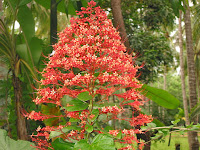India, with her kaleidoscopic diversity is a country
whose charming variety emanates from its history, shaped by its geography and
adorned by myriad cultures. A few days from now, we shall be celebrating our 70th
Independence Day. Years ago, India made a “tryst with her destiny” and the
hopes and dreams of a great nation were envisioned and dreamt.
Today, we are a proud nation with the third largest
economy (in PPP) and possess the second largest human resources. We have sent mangalyana and are envied by the world
for our indigenous technology. We are also poised to fight the demons of
unequal development and socio-economic infrastructure bottlenecks.
Here, in the southernmost district of the country,
we are proud of being a part of India’s progress. The district has seen the
worst of natural disaster and yet its people are so resilient that they have
bounced back to normalcy in record time. This quality of people of Nicobar is
our greatest asset.
Usually, we associate growth and development only
with the economy and completely ignore the social aspect of it. From Nicobar,
the materialistic world can learn a lesson or two. Whereas, in the rest of the
country, the position of women even after 70 years of independence is still
questionable, the Nicobari women are independent, free from the fear of
foeticide, gender discrimination, eve-teasing, dowry deaths, domestic violence,
acid attacks and even the social ostracism which only a woman faces in case of
child out of wedlock. It is indeed a great achievement that the people of
Nicobar treat their women so well and help in materializing the true spirit of
freedom envisaged by thinkers like Tagore and Rousseau – the freedom from the
fear and a dignified life.
 |
Figure 1: A group of nicobari women in their traditional dress.
Photo: Greatheart Nicobari
|
The tuhet system
that takes care of the orphans, the old, the sick, the disabled is yet another
strength of the people of Nicobar. It’s indeed a great freedom from
insecurities that the people of the district ensure for one and all. Our
friendly neighboring country, Bhutan is well known for its high happiness index
and the people of Nicobar too can boast of the same as they are so socially
advanced, resilient in the face of adversities, so happy, simple and content.
Yet, we are certainly not a Utopian district. We have
more than our fair share of problems which have made administration in this
district an arduous task. The biggest challenge for the administration is the
long gestational period of developmental projects due to the very geography of
this district. The district comprises of 22 islands and eight of them are
inhabited. These islands are not only far from the nearest economic hub i.e.
Port Blair but also separated from each other by a very tempestuous sea, making
transportation of people, goods and everything that is important for the
development of infrastructure a slow and cumbersome process. The lack of mobile
and internet connectivity along with this geographical isolation also inhibits
the islands from taking giant leaps towards progress. The smaller islands like
Chaura and hamlets in Nancowry and little Nicobar also lack some very basic
facilities like water and 24x7 electricity. Though the administration has been
taking steps like floating a tender for de-salination plant in Chaura Island,
installation of solar street lights, commissioning an exclusive boat for the
southern sector etc, the common islander still has a lot to wish for.
Therefore, a lot has to be done by the administration, by in fact everyone,
from the lowest MGNREGA functionary to the district administration to the highest
policy makers for the betterment of this beautiful district. With the 70th
anniversary of India’s independence not far off, we must understand that the
only way forward is as enshrined by our national government’s motto .i.e.
“together with all, development for all” and to achieve this, we all must join
hands and play our small role in this glorious march to a better India. Jai
Hind.















